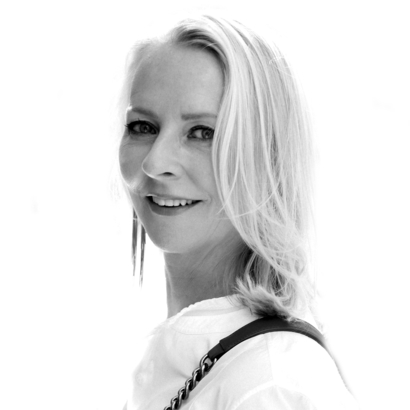Every 30 hours between 2020 and 2022, someone became a billionaire. Isn’t that nice? In 1990, the world had a paltry 66, and now the earth is crawling with them: 2,640 billionaires in all! The good people who make skin-care products seem attuned to these dizzying statistics as they raise the prices of their serums and moisturizers up, up, and into the stratosphere. Jeff Bezos, Elon Musk, Mark Zuckerberg, you’re glowing.
No one felt quite as flush this year as Bernard Arnault, the chairman and C.E.O. of LVMH, who jockeyed with Musk to be the billionaire-est billionaire of them all. Perhaps it’s just a coincidence that his conglomerate produces some of the headiest beauty products around. One, Guerlain Orchidée Impériale Black: The Symbioserum, sounds as if it were conceived in the hothouse of a grand château and clocks in at $1,600.
Insiders can stratify skin care’s upper reaches the way a sanctioned oligarch discerns sevruga from osetra from beluga. “There’s super-luxury skin care, the $800 or $1,000 products … the ones you need a mortgage to buy,” says Maureen Case, who, as the former C.E.O. of Augustinus Bader and former president of La Mer, knows what she’s talking about. “There’s a very solid tier of luxury skin care, and that’s where the usual suspects hang out: La Mer, Sturm, 111Skin.”
“That’s usually between $250 and $350 for a six-week supply,” Case says. “And then you drop down to premium skin care”—as in the Drunk Elephants and the SkinCeuticals.
Got that? Super-luxury, luxury, and premium. Keep it straight! They may sound interchangeable, but they most definitely are not.
“When you come up with a luxury skin-care product, you have to determine what level you want to enter the market,” says Case. “And it’s really important because people will judge based on price.”
Judge away.
La Mer has increased the price of its Moisturizing Matte Lotion from $260 in 2017 to $320 in 2023. La Prairie has hiked its Skin Caviar Luxe Sleep Mask from $315 in 2016 to $445 today. RéVive may charge $750 for its Peau Magnifique Serum, but its C.E.O., Elana Drell-Szyfer, is proud to tell me that the brand hasn’t raised that number or any other in five years. “We felt like the prices were high,” she adds. I’ll say!
Drell-Szyfer defends RéVive by explaining that some of the products come with a special application brush or roller. Also, “ingredients have become awfully expensive,” she adds. Consumers “don’t necessarily know about the cost of ingredients, but I think that if they see results, they feel like the price is justified.”
Such results can be maddeningly elusive, even in this rarified world, and yet that’s changing as high-end (excuse me, super-luxury) brands employ some of the tricks of the hoi polloi to convince consumers of their superiority. “People used to watch infomercials, where they would see these before-and-after photographs and testimonials,” says Drell-Szyfer. Most products in infomercials are inelegant, to put it gently. Lowbrow. Now, RéVive and others display before-and-after photographs in all their messy, splotchy glory.
In the upper echelon, product names such as RéVive’s tend to be French, even if they’re born in the U.S.A. These brands also bear labels with the words “imperial,” “royal,” “platinum,” “rare,” “diamond,” “caviar,” and plain old, unequivocal “rich.”
But the skin-care arrivistes aren’t playing by the traditional richy-rich rules. The name Augustinus Bader doesn’t conjure up an exiled countess on a private island, and yet the line has been one of the greatest success stories of the past decade. There’s a clinical remove to U Beauty, 3Lab Skincare, and Lyma Skincare, and that, apparently, is by design.
These are brands steeped in science and brisk efficiency. They chalk up their lavish prices not to faceted bottles or founder lore but to the power of their ingredients and the research required to prove their performance. “In the future, the science-backed brands are the ones that will thrive,” Case tells me.
It seems as if the future is now.
Lyma Skincare arrived in late June to great fanfare, a 30,000-person waitlist, and a $655 price tag for the starter set. The company behind it is no stranger to super-premium luxury, having brought a $2,695 at-home laser to the .1 percent last year.
Lyma Skincare arrived in late June to great fanfare, a 30,000-person waitlist, and a $655 price tag for the starter set.
Lucy Goff, the founder of Lyma, parries my questions about price like a trained athlete. Her story starts and ends with the formula, which, she says, “is over 80 percent active ingredients,” with less than 20 percent consisting of “water and other stabilizers.” For many products, she contends, the percentages are reversed—at best.
The list of Lyma skin-care claims is long and effusive. It will, according to Goff, “hoover up dead skin cells and make way for new cells to form. It helps slow down the division of those cells to keep them alive for longer. It will increase your skin immunity. It will give your skin more energy. It will help with your skin microbiome. It will deliver the lipid profile of a 20- to 22-year-old” to your (my) not-22-year-old face. It kicks up the skin’s microcirculation. Also, it moisturizes. Whew!
If that sounds like a whole lot, it is. And Goff understands that she needs to do more than just rattle off a list. That’s why she engaged a team of scientists to test the product, going so far as to take skin biopsies from living humans. (Ouch.) She aims, by the end of the year, to present studies showing “how much the mitochondrial count in your dermis will have been increased by using Lyma skin care.”
Goff is genuine in her urge to shake the skin-care industry—or at least her part in it—out of the land of fantasy and into accountability. “People are buying these products because they want to change something about themselves,” she says. “You want to feel better about your skin. And you can’t belittle that.”
All of this takes time, diligence, and patience, something that often isn’t in great supply among the flamboyantly wealthy. Goff cites 12 weeks; Augustinus Bader asks for 27 days. “It’s a long time for somebody to wait,” says Case. “There’s a lot of disappointment because people don’t realize that it really is a journey.”
Expensive skin care is full of hope, often unrealized, sometimes dashed. With many products, Goff says, “you are paying a lot of money for a moisturizer.” And a good moisturizer doesn’t need an elaborate pedigree, a florid name, or a gold jar to perform.
“Believe me, there are very few companies that really just want to make women look better,” Case says. “They say they do, but … ” She trails off. “People are constantly looking for a remedy to the trauma of aging.”
We all want to live longer and look better doing it, and that, too, has become its own status symbol. At what price? It’s only going up.
Linda Wells is the Editor at Air Mail Look





